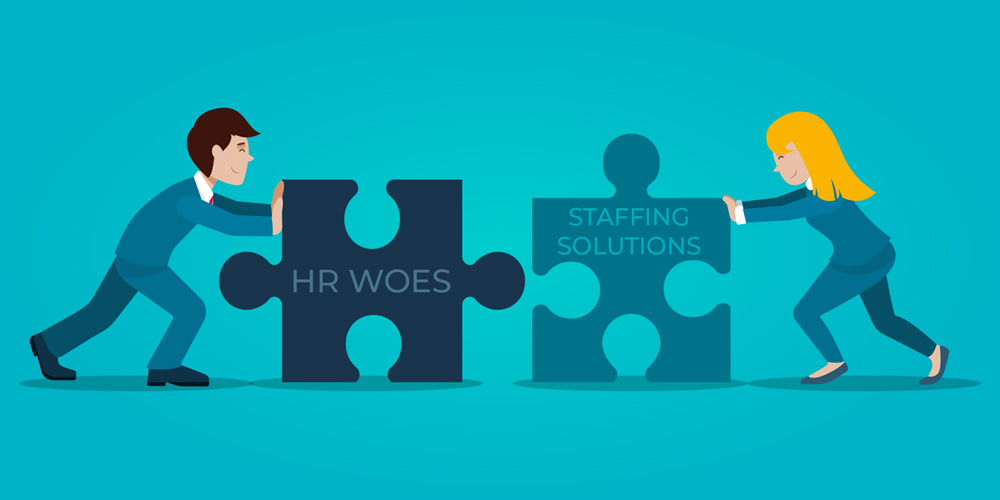Change Your Organization With Proven Staffing Solutions for Optimum Performance
One important component that significantly impacts an organization's performance is its workforce. It needs a nuanced approach that considers various variables such as existing staffing demands, employment methods, technological developments, skill growth programs, and efficiency examination metrics. By checking out these aspects in deepness, companies can pave the way for transformative adjustment that drives success.
Assessing Current Staffing Requirements
To make sure effective operations and productivity, it is essential to perform a comprehensive analysis of present staffing needs within an organization. By reviewing the existing labor force against the needs of business, leaders can identify voids, redundancies, or locations for improvement. This analysis includes evaluating factors such as work circulation, skill collections, and future development estimates.
The primary step in examining current staffing requirements is to assess the organization's goals and purposes (staffing solution). Understanding where the business is heading permits a strategic positioning of staffing needs to fulfill those objectives successfully. Additionally, evaluating past and existing efficiency information can offer useful understandings right into locations that may require extra assistance or restructuring
In addition, involving with division heads and group leaders can offer a granular view of the daily operations and highlight any type of details staffing obstacles encountered at the ground degree. This collaborative approach guarantees that the evaluation is detailed and represent varied point of views within the company. Inevitably, a well-executed analysis of existing staffing requires kinds the structure for implementing targeted solutions that drive optimal performance and success.

Carrying Out Strategic Recruitment Methods
Executing calculated employment methods entails even more than simply loading vacant positions; it requires a proactive strategy to recognizing, involving, and safeguarding the appropriate prospects for the work. By casting a large web, companies boost their possibilities of locating prospects with the ideal skills and cultural fit.
Furthermore, integrating data-driven recruitment techniques can improve the working with procedure by enabling organizations to examine prospect performance metrics and make informed choices. Utilizing applicant radar and predictive analytics can assist improve recruitment initiatives and recognize leading performers extra effectively. Growing a strong employer brand and showcasing a positive firm society can bring in passive candidates and place the organization as a company of selection in the competitive skill market. By implementing these calculated employment techniques, companies can maximize their hiring processes and safe and secure top talent to drive service success.
Leveraging Technology for Employing Effectiveness
Leveraging innovative technological tools can dramatically enhance the efficiency of the employing process in companies looking for top-tier hop over to these guys talent. From candidate radar that enhance candidate choice to AI-powered tools that analyze resumes for relevant abilities, modern technology plays an essential role in speeding up the recruitment procedure. By automating recurring jobs like resume screening and meeting organizing, HR professionals can concentrate their energy and time on involving with the most qualified prospects.
One of the essential benefits of leveraging modern technology for employing effectiveness is the ability to get to a bigger pool of prospects in a much shorter amount of time. staffing solution. On-line task my company boards, social networks platforms, and employment sites enable companies to get in touch with potential prospects worldwide, expanding the skill pool and raising the probability of finding the excellent suitable for the role
In addition, innovation enables data-driven decision-making in the employment process. By tracking metrics such as time-to-hire, cost-per-hire, and prospect quality, companies can optimize their hiring methods and improve general employment outcomes. Welcoming technology in the working with process is crucial for organizations seeking to stay competitive in today's busy job market.
Establishing Educating Programs for Skill Enhancement
With the foundation of a technically maximized employment process in position, the emphasis currently shifts towards establishing training programs customized to boost the skills of the inbound talent pool. Training programs play a crucial function in outfitting new hires with the essential knowledge and proficiencies to master their duties within the organization. These programs ought to be developed to not just address the particular skill spaces recognized during the recruitment process but also to promote a culture of continuous learning and development.
To make sure the effectiveness of training programs, companies ought to conduct extensive training needs assessments to identify locations for renovation and customize the content as necessary - staffing solution. Making use of a mix of training techniques such as workshops, online training courses, on-the-job training, and mentorship can assist deal with different understanding styles and preferences amongst workers

Tracking Performance Metrics for Continuous Improvement
Keeping an eye on vital efficiency metrics is crucial for driving continual enhancement within an organization. By tracking and evaluating specific indicators of success, businesses can recognize areas for enhancement, make educated choices, and eventually enhance their overall performance. To successfully keep track of performance metrics, companies should first develop clear goals and key efficiency indications (KPIs) that align with their critical objectives. These KPIs can vary depending upon the industry, division, or particular task being assessed. Routinely accumulating and examining web link information associated to these metrics enables monitoring to acquire useful insights right into the effectiveness of present approaches and processes. In addition, keeping an eye on efficiency metrics permits very early identification of any type of deviations from anticipated outcomes, making it possible for prompt rehabilitative action to be taken. Continual tracking and evaluation of performance metrics not only promote ongoing enhancement yet additionally foster a culture of responsibility and openness within the company. Inevitably, leveraging performance data for continuous enhancement can drive technology, boost productivity, and ensure long-lasting organizational success.
Conclusion
